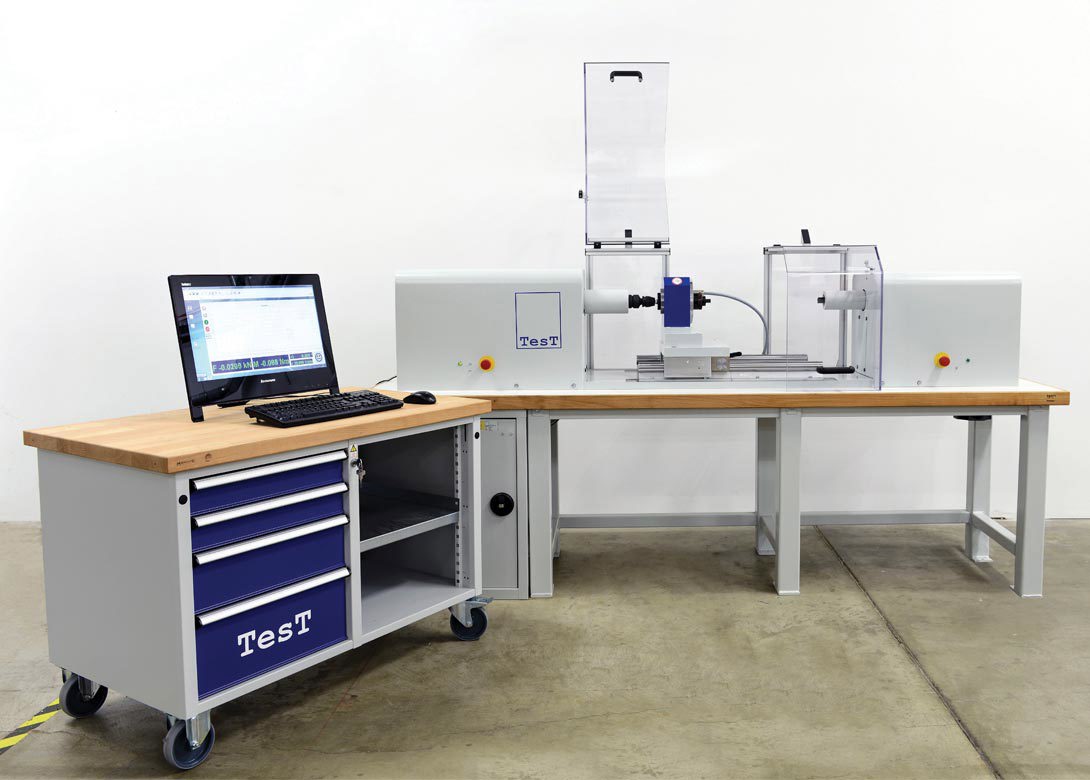Why fastener companies should know about the friction values of their screw connections
30 November 2016
By Julia Kiewitter, marketing, TesT GmbH
A modern car or aeroplane is composed of many thousands of individual parts. These parts consist of different materials and have different shapes according to their intended use. Screws and nuts are used to join and fasten these components to each other in such a manner that they are releasable to carry out repairs or to replace parts.
Critically, the cohesion of those bolted components must be ensured and maintained when external loads occur. The four expensive alloy wheels of a passenger car must not be unintentionally released: Whether the car is parked in the garage, is on high-speed roads, during deceleration, during acceleration, or when using assistance systems such as ABS and ESP. It is also important they do not unintentionally release at very different temperatures such as in summer or winter.
Screws and nuts ensure safety and that there is no unintentional release by generating a clamping force during assembly, which holds the components together despite the loads exerted on them in use. Unfortunately, this clamping force cannot be determined on the vehicle assembly line for economic reasons.
This is the point when friction comes into play. From an ecological and economic point of view, friction is usually a disturbing factor – air resistance and bearing friction bring every vehicle to a standstill after a short time. In order to prevent this, drive energy must always be supplied. In the case of screw connections, on the other hand, friction is indispensable. Friction in this context is a reciprocal effect between two contacting surfaces. Without friction in the contact surfaces of screw, nut, and bolted components, the connection would spontaneously and immediately release and the components would fall apart. Friction resists this propensity to self-release. In order to ensure this resistance adequately, friction and the self-releasing behaviour must be measurable and adjustable.
The self-releasing behaviour can be quantitatively determined in a simple manner by using the thread pitch and the nominal diameter of the screw connection. It is understood as a permanently present, internal release torque of the screw connection. In order to prevent unwanted release, friction must therefore be significantly greater than the self-release torque. Thus, there is a self-release torque within the screw connection and a friction torque within the contact surface.
The screw manufacturer must produce the friction properties during the production process and demonstrate them to the customer. In situations where essential parts of the value added chain are outsourced, for example the screw coating process, the screw coater must also ensure and demonstrate the friction. In the end, the screw supplier and the screw user are both responsible to their customers – a crucial reason for all of these groups to carry out the verification of friction coefficients. Good practice clearly indicates both screw suppliers and screw users should, for this reason, carry out a friction coefficient determination within the scope of incoming goods inspection.
In the context of the product development and product enhancement of screw coatings, the verification of friction coefficients is also essential – much more than that it is a prerequisite. It must be an objective of the development to be able to adjust friction values in production, reproducibly and with a low dispersion of variance.
If a screw supplier dispenses with friction coefficient determination, it cannot guarantee its screw connections fasten components as they should. That can have very serious consequences for users of motor vehicles, aircraft and railways, as well as for users in the wind industry, and in bridge and steel construction. Without knowledge of its friction coefficients the screw supplier cannot provide customers with instructions for tightening of the screw connections.
The clamping force to be applied, which is necessary to fasten a screw connection between components securely, is therefore of great importance for practical purposes. Just think of the everyday example of changing a wheel on a passenger car, and ensuring it will not come loose catastrophically when driving at speed. Since the clamping force cannot be determined during the tightening process of screw connections – for the reasons already mentioned – the only remaining possibility is to utilise the mathematical relationship between clamping force, friction coefficient and tightening torque. The tightening torque can easily be determined by means of a simple torque wrench. It is therefore elementary and of vital interest to determine the friction coefficients of screw connections.
Friction not only clamps the wheels to a car and a cylinder head to the block. The knowledge of the friction allows the designer to use smaller and lighter fasteners. Thus it becomes possible to reduce the fastener’s contribution to weight and the product life costs of the final product. Accurately, repeatedly determining the friction coefficient is not just a critical safety requirement, it is also an economic one.
With a wide range of friction testing machines and multi-component sensors for the determination of friction coefficients TesT GmbH, located in Erkrath, Germany, provides complete solutions for screw and bolt testing. It is the market leader in the field of friction coefficient analysis on screw connections up to the size of M80. TesT also supplies vibration testing machines for the dynamic lateral loading on fasteners and universal testing machines for tensile testing on screws with forces of up to 600kN.

